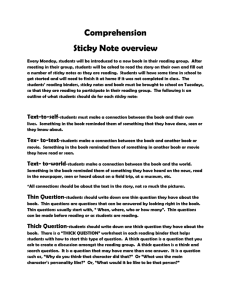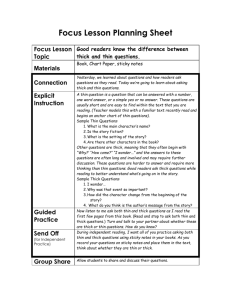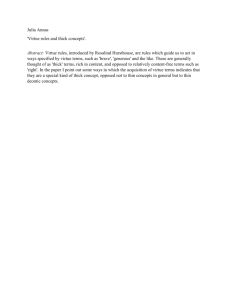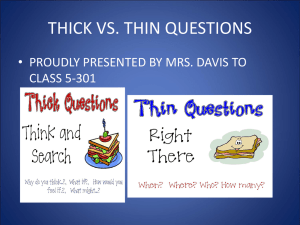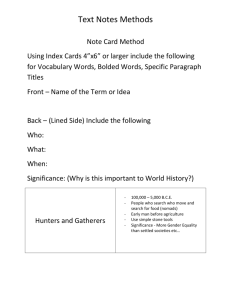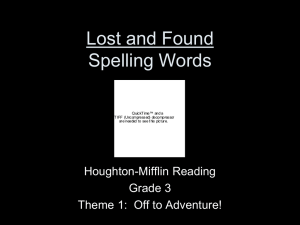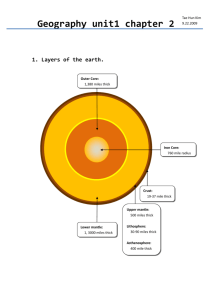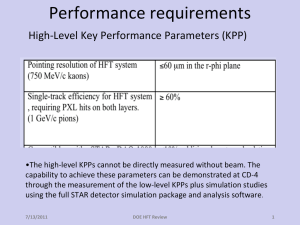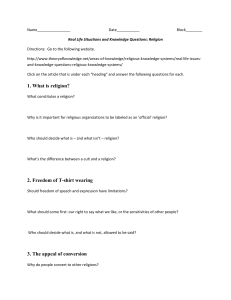Asking Questions Lesson
advertisement
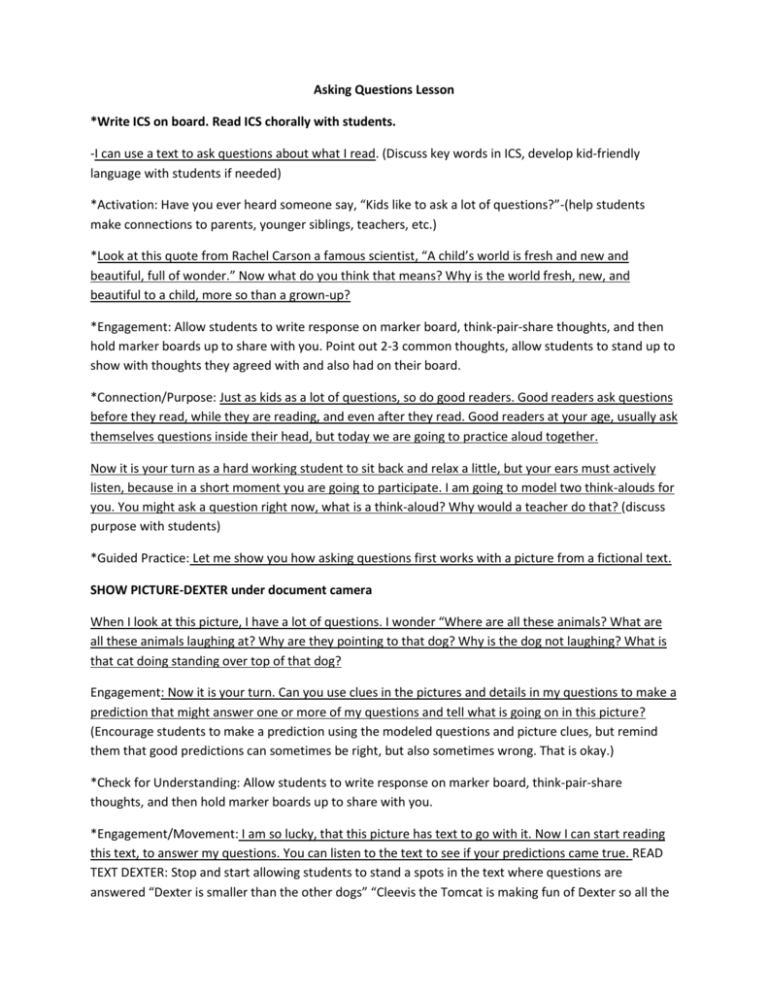
Asking Questions Lesson *Write ICS on board. Read ICS chorally with students. -I can use a text to ask questions about what I read. (Discuss key words in ICS, develop kid-friendly language with students if needed) *Activation: Have you ever heard someone say, “Kids like to ask a lot of questions?”-(help students make connections to parents, younger siblings, teachers, etc.) *Look at this quote from Rachel Carson a famous scientist, “A child’s world is fresh and new and beautiful, full of wonder.” Now what do you think that means? Why is the world fresh, new, and beautiful to a child, more so than a grown-up? *Engagement: Allow students to write response on marker board, think-pair-share thoughts, and then hold marker boards up to share with you. Point out 2-3 common thoughts, allow students to stand up to show with thoughts they agreed with and also had on their board. *Connection/Purpose: Just as kids as a lot of questions, so do good readers. Good readers ask questions before they read, while they are reading, and even after they read. Good readers at your age, usually ask themselves questions inside their head, but today we are going to practice aloud together. Now it is your turn as a hard working student to sit back and relax a little, but your ears must actively listen, because in a short moment you are going to participate. I am going to model two think-alouds for you. You might ask a question right now, what is a think-aloud? Why would a teacher do that? (discuss purpose with students) *Guided Practice: Let me show you how asking questions first works with a picture from a fictional text. SHOW PICTURE-DEXTER under document camera When I look at this picture, I have a lot of questions. I wonder “Where are all these animals? What are all these animals laughing at? Why are they pointing to that dog? Why is the dog not laughing? What is that cat doing standing over top of that dog? Engagement: Now it is your turn. Can you use clues in the pictures and details in my questions to make a prediction that might answer one or more of my questions and tell what is going on in this picture? (Encourage students to make a prediction using the modeled questions and picture clues, but remind them that good predictions can sometimes be right, but also sometimes wrong. That is okay.) *Check for Understanding: Allow students to write response on marker board, think-pair-share thoughts, and then hold marker boards up to share with you. *Engagement/Movement: I am so lucky, that this picture has text to go with it. Now I can start reading this text, to answer my questions. You can listen to the text to see if your predictions came true. READ TEXT DEXTER: Stop and start allowing students to stand a spots in the text where questions are answered “Dexter is smaller than the other dogs” “Cleevis the Tomcat is making fun of Dexter so all the dogs are laughing/pointing to him” “Cleevis the Tomcat is standing overtop of Dexter to demonstrate how he doesn’t even ruffle the fur on his belly.” *Guided Practice: Now, let’s try this same process with words in a text. I am going to model another think aloud for you this time using a historical fiction passage. I am going to say all the questions I have out loud even if they would normally be in my head, and then write them on a sticky note. Then I am going to stick them on the board. Sometimes I use sticky notes when I am reading even at home. This helps me remember the questions I have. I can also look for answers easily as I keep reading and figure out what might be confusing to me. MODEL THINK ALOUD-Abraham Lincoln and the Robins-Put text under document camera. (Read using a “shared reading” approach. Have students fill in words as you pause to maintain focus.) READ/PUT UP QUESTIONS Read title: When I read the title Abe Lincoln and the Robins I wonder, “What does this title tell me about this passage?” I know Abe Lincoln was a president, and I know that robins are a kind of bird, but I don’t really know how they will fit together in the passage. Read More Lawyering outfit. I have never head of that before. What is a “lawyering outfit?” Well when I reread the sentence “All three men were in their best clothes, what Abe called at the time his “lawyering” outfit, I guess I can imagine Abe in a suit and tie. Kind of like in the picture and what I have seen layers wear before on TV. I wear my best clothes to church, weddings, funerals, sometimes even when I was little and I liked to play dress-up. READ MORE When I read about the robins’ behavior I wondered, “What could cause Robin’s to act so strangely?” Now, I want your help with the last half of the story. As I continue to read, I want you to think of a question you would ask yourself, and write it on a sticky note. I am going to continue to read and write questions of my own too with you, but I am not going to share them until the end. Great minds think alike sometimes, and we might both as “good” readers have the same questions. Visual Models: Before we continue, I want to help prepare you even more to write your questions. I am going to introduce you to two types of questions. Thick and Thin. (put up posters as visual). Engagement/Movement: Stand up and make your body as thin as you can. Think questions are the easiest questions to write and the easiest questions to answer, just like the picture of the thin sandwich on the poster would be easy to eat. These are questions where the answers can be found “right there” in the text. (go over key question starters on poster-connect to text currently reading.) Now stand up and make your body as thick as you can. Thick questions are hard to write and answer, just like the picture of this thick sandwich would be hard to eat. These are questions where the answers can be found only by “searching and thinking” in and about the text. (go over key question starters on poster-connect to text currently reading.) Check for Understanding: Let’s take a look at my questions and group them as “thick” and “thin.” Read sticky notes from think-aloud, allow students to stand up and show you with their body whether they think your questions are thick or thin. Group questions by poster they match. Check for student understanding. Independent Practice: As third graders, you should be able to write questions that are “thick.” Who is ready to try? As we use shared reading to finish this passage, I will stop in a few different places and allow you the opportunity to ask yourself questions. Please write one thick question on your sticky note. Remember the question starters on the poster can help you if you are having trouble starting your question. READ MORE PLACE MY QUESTIONS ON THE BOARD BACKWARDS TO SHARE AFTERWARDS. I know that both the lawyers do not want to stop and help the robins because they have work to do, but I wonder “What if Abe feels differently about the babies than the other lawyers?” READ MORE After reading I wonder, “How is Abe going to get up to the nest without ruining his good clothes?” READ MORE Abe is a mess now. “Where is he going to go?” He doesn’t have time to go home and change his clothes. I wonder if he is going to go to the meeting looking like he does. READ MORE The story is over, but I still have some more questions. I wonder “What would happen if I were in the same situation?” *Check for Understanding: Now think-pair-share. You must prove to your partner your question is thick. Can your partner answer your question by thinking or searching for an answer? (Allow students time to discuss and then call students back and have them stand to show you with their body if there question was truly thick, or instead thin. Call on one “thin” question writer to explain how the question could be made thick) *Quickly allow students to show you an answer with their body for your remaining questions turned over backwards. *Now you are going to practice asking questions with a partner and a new text. (Show students graphic organizer on document camera and explain process. Put students in groups of 4 and have all 4 students decide on the same text to read. Then, have students pair off within the group and write questions, switch to answer, and evaluate. *Scaffold-Pass out thick question starters in a baggie for students to use when creating questions if needed. *When you are finished with the assignments, you have a very short exit slip to complete independently and bring to me. Any questions?
